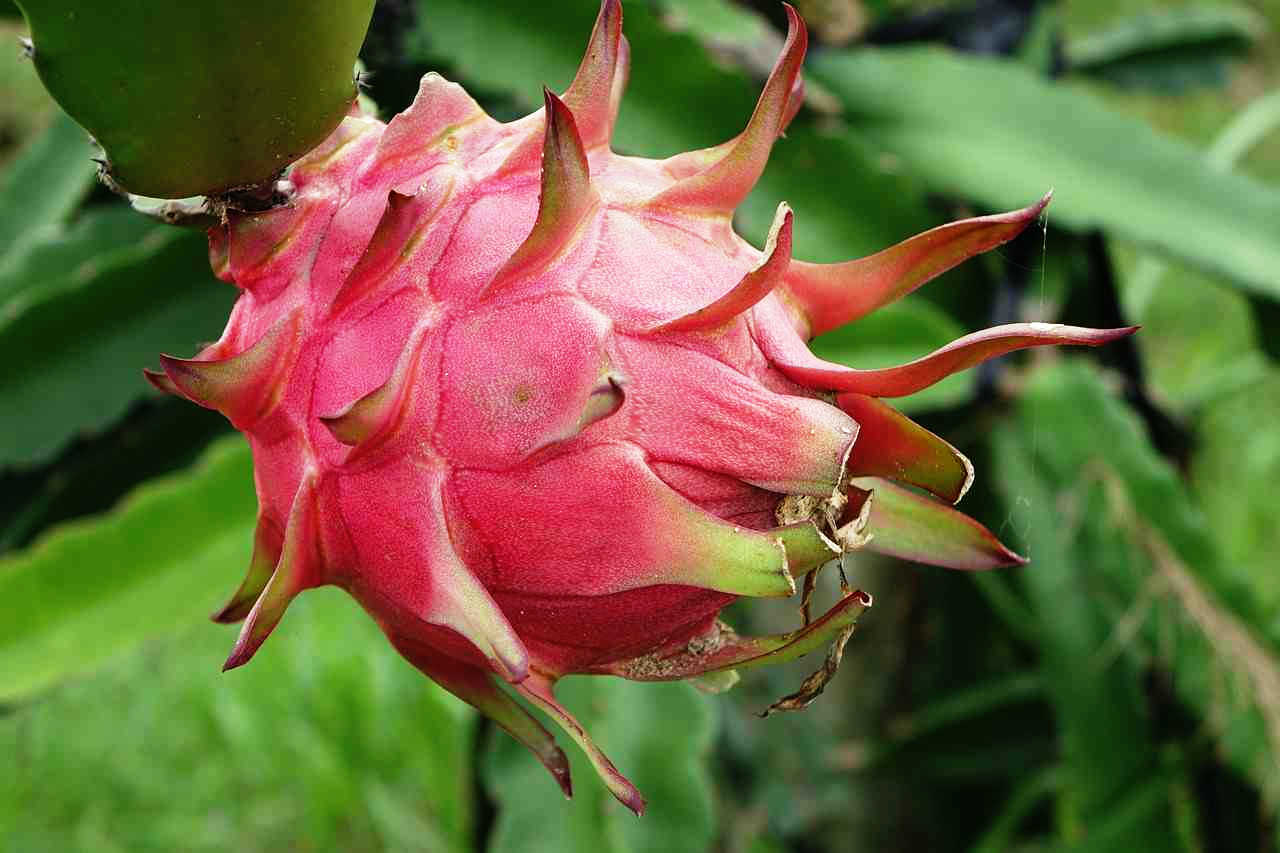In this guide, we’ll walk you through the essential techniques and tips for successfully propagating dragon fruit.
Understanding Dragon Fruit
If you’ve ever marveled at the bold, vibrant appearance of the dragon fruit, you’re not alone! Known for its stunning pink skin and unique green scales, this tropical fruit isn’t just a feast for the eyes; it’s also a delicious and nutritious addition to any garden.
Before we discuss propagation, it’s helpful to know a bit about what dragon fruit is. The fruit comes from several different species of cactus in the genus Hylocereus and Selenicereus. Its unique appearance and mildly sweet taste won it popularity in many kitchens around the world. Not only does it bring an exotic touch to dishes, but it’s also packed with vitamins, antioxidants, and fiber.
Best Techniques for Propagating Dragon Fruit
There are mainly two methods for propagating dragon fruit: through seeds and vegetative propagation via cuttings. Let’s take a closer look at both methods.
Method 1: Propagating with Seeds
Harvesting Seeds: Start by choosing a ripe dragon fruit. Cut the fruit in half and scoop out the small black seeds. Rinse the seeds under cool water to remove any pulp.
Drying Seeds: Spread the seeds on a paper towel and allow them to dry for 24-48 hours. This helps prevent mold during germination.
Preparing for Germination: Fill small pots or seed trays with a well-draining cactus mix or a light, sandy soil. Ensure the pots have drainage holes to prevent waterlogging.
Sowing Seeds: Place the dried seeds on the surface of the soil and lightly press them down. Do not cover them with soil as they require light to germinate.
Watering: Mist the soil with water gently (using a spray bottle works well) and cover the pots with a clear plastic cover or a plastic bag to maintain humidity.
Providing Light: Place the pots in a warm, brightly lit area but avoid direct sunlight, which can scorch the delicate seedlings.
Germination Time: Seeds may take anywhere from 2 to 4 weeks to germinate. Once seedlings reach about 3-4 inches in height, you can transplant them into larger pots.
Method 2: Propagating from Cuttings
For quicker results and more reliable offspring, many gardeners choose to propagate dragon fruit from cuttings.
Selecting a Cutting: Choose a healthy, mature stem from your existing dragon fruit plant. A section that is about 12 inches long is ideal.
Preparing the Cutting: Cut the stem at a 45-degree angle using sharp, clean scissors or a knife. Allow the cutting to dry and callus over for 2-3 days. This helps prevent rot when planted.
Planting the Cutting: Fill a pot with a cactus mix or a well-draining potting mix. Make a hole in the soil and gently insert the cutting about 3-4 inches deep.
Watering: Water the soil lightly to settle it around the cutting, but avoid soaking it. Allow the top inch of soil to dry out before watering again.
Creating the Right Environment: Keep the cutting in a warm, bright spot but shield it from direct sunlight until it establishes roots.
Rooting Time: It typically takes 2-3 weeks for the cutting to develop roots, at which point you might notice new growth appearing.
Caring for Your New Dragon Fruit Plants
Once your seedlings or cuttings are established, they will require care to ensure successful growth.
Sunlight: Dragon fruit thrives in bright, indirect sunlight. If you’re growing it indoors, consider placing it near a window that gets plenty of light.
Watering: Water your plants when the top inch of soil feels dry. Dragon fruit is drought-resistant but thrives with consistent moisture.
Fertilizing: Use a balanced cactus fertilizer or compost to nourish the plants during the growing season, typically in spring and summer.
Supports: As dragon fruit is a climbing cactus, consider providing a trellis or support structure for your plants to grow upward.
Potential Challenges
Pests and Diseases: Dragon fruit can be susceptible to pests like aphids, mealybugs, and scale insects. Regularly inspect your plants, and if you notice any infestations, treat them with insecticidal soap or neem oil. Fungal issues can also arise from over-watering or poor air circulation, so be cautious about watering practices and ensure good drainage.
Temperature Sensitivity: Dragon fruit prefers warm climates and may struggle if exposed to frost. If you live in a cooler region, consider growing your plants in pots so you can bring them indoors during colder months.
Overwatering: One of the most common mistakes is overwatering. Dragon fruit is a cactus, which means it prefers drier conditions compared to other types of plants. Ensure that the soil dries out between waterings to avoid root rot.
Insufficient Pollination: Some varieties of dragon fruit are self-pollinating, while others require cross-pollination. If you’re interested in fruit production, you might need to hand-pollinate flowers using a small brush to transfer pollen between blooms.
Harvesting Your Dragon Fruit
Once your dragon fruit plants mature, you’ll eventually get to the rewarding stage of harvesting your fruit. Here are some tips for knowing when your dragon fruit is ready to pick:
Color: Look for a bright, vibrant color on the skin. Depending on the variety, the skin can range from bright pink to yellow.
Scales: The green scales should be prominent and well-formed. If you notice the scales starting to shrivel or turn brown, it’s a sign that the fruit is overripe.
Softness: Once the fruit is slightly soft to the touch, it’s a good indication that it’s ripe and ready for harvesting.
Use a sharp knife or scissors to cut the fruit from the plant, leaving a small portion of the stem attached.
Conclusion
Propagating dragon fruit is not only an enjoyable activity, but it also enhances your gardening experience by adding a touch of the exotic to your collection. Whether you choose to propagate from seeds or cuttings, following these outlined methods will guide you towards success.
With proper care, your dragon fruit plants will flourish and reward you with their uniquely beautiful fruit. Aside from the delicious taste, growing dragon fruit can also become an interesting conversation starter, making your garden as fascinating as it is fruitful.
So, whether you’re an experienced gardener or a beginner, consider adding dragon fruit to your list of plants to propagate. Enjoy the process of growth, and soon enough, you’ll be indulging in your very own homegrown dragon fruit!





